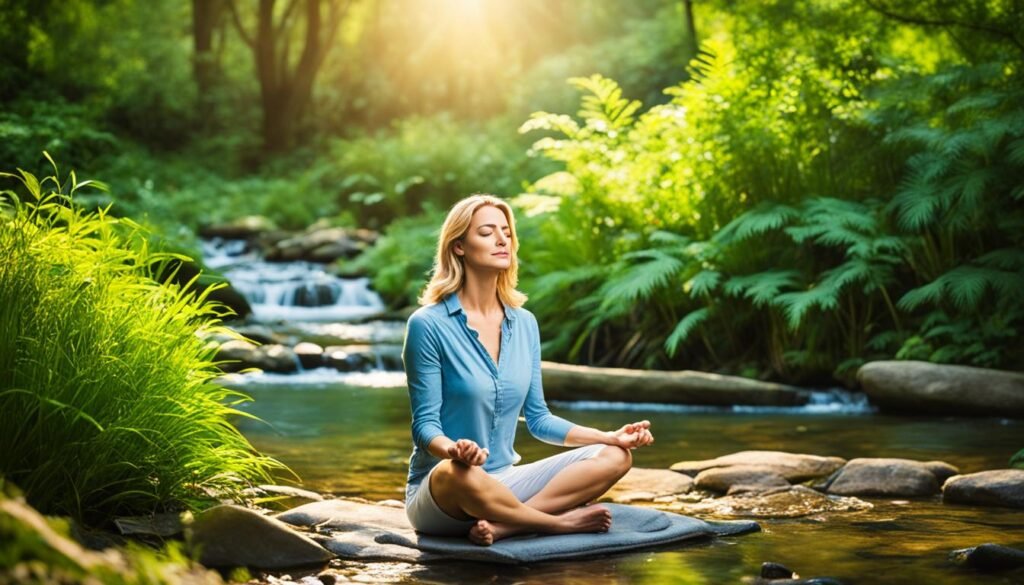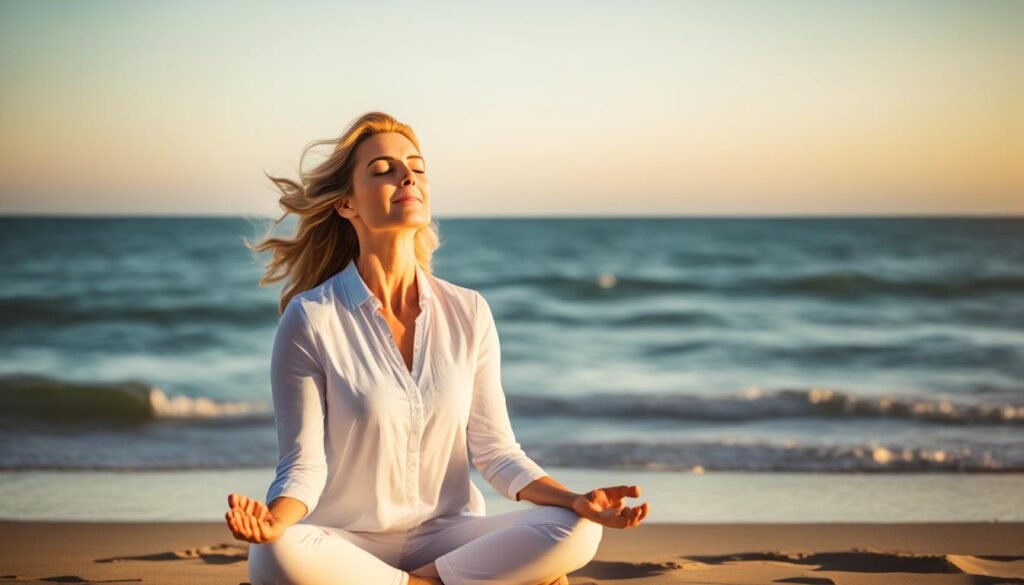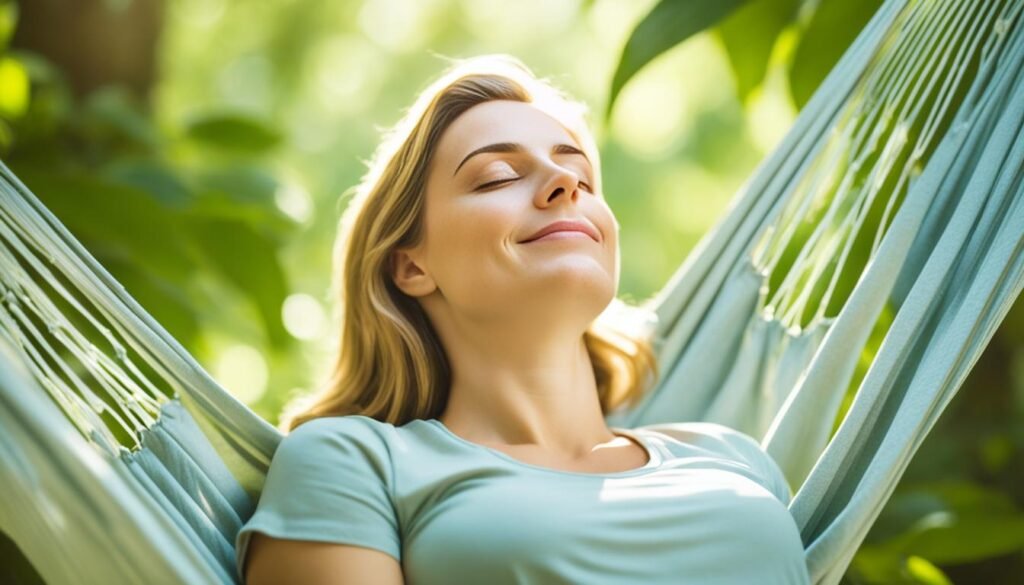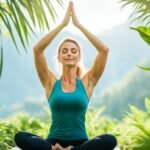Relaxation techniques can lower stress symptoms and help you enjoy a better quality of life, especially if you have an illness. These techniques generally involve focus and awareness, where you direct your attention to something calming and become more aware of your body. Some common relaxation methods include autogenic relaxation, progressive muscle relaxation, visualization, deep breathing, massage, meditation, tai chi, yoga, biofeedback, music and art therapy, and aromatherapy.
Relaxation techniques can slow your heart rate, lower blood pressure, slow your breathing, improve digestion, control blood sugar levels, reduce stress hormone activity, increase blood flow to major muscles, ease muscle tension and chronic pain, improve focus and mood, enhance sleep quality, lower fatigue, lessen anger and frustration, and boost your confidence to handle problems. To get the most benefit, incorporate relaxation alongside other positive coping strategies like thinking positively, finding humor, solving problems, managing your time and priorities, exercising regularly, eating a healthy diet, getting enough sleep, spending time outside, and reaching out to supportive family and friends. Remember that relaxation is a skill that requires practice to master the techniques that work best for you.
What are Relaxation Techniques?
Most people that experience anxiety also experience unpleasant physical sensations regularly, known as “somatic” anxiety symptoms. These can include muscle tension, headaches, backaches, a clenched jaw, feeling keyed up, restless, and “on edge,” as well as difficulty concentrating. These physical sensations are a result of the body’s attempts to protect itself by redirecting blood flow and muscle tension. When we experience mild to moderate levels of anxiety on a daily basis for long periods of time, we can get used to this tense, jittery state, until it is hard to even know what it is like to be relaxed. The goal of relaxation exercises is to change this baseline to a lower level of tension and anxiety over time.
Goals of Relaxation Techniques
The goals of relaxation techniques include: 1) Learning when and how to use these skills, 2) Learning to breathe in ways that will promote calm and relaxation, 3) Slowing down activity in the mind to avoid or better tolerate “racing thoughts,” 4) Increasing awareness of tension in the body and improving awareness of the difference between tension and relaxation, 5) Lowering general levels of tension and restlessness in the body, 6) Learning to incorporate activities into our lives that are fun and/or make us feel competent, and 7) Being calmer in our daily lives by learning to “slow down” and set realistic goals for our time.
Relaxation Strategies: When and How to Use Them
Relaxation strategies can be useful in reducing general levels of anxiety and tension over time, but they are not typically a “cure” for anxiety. They are best used together with other CBT skills such as cognitive restructuring and exposure, and practiced regularly, like exercise. For each person, there is a different set of activities and skills that help them relax. Relaxation strategies are just one set of skills used in CBT, and they should not be used to prevent or get rid of panic or severe anxiety symptoms. Relaxation strategies are best used as a companion to exposure and cognitive skills, but not as a replacement to them. Sometimes relaxation strategies can actually make anxiety worse in the long run, because trying to get rid of anxiety trains the brain to see it as “bad.” The best times to use relaxation strategies are as a daily practice, like exercise, to lower tension and feel calmer in the body over time, or during times of distress in order to prevent avoidance of something that is integral to our life aims.
Slow Diaphragmatic Breathing
Slow diaphragmatic breathing is one relaxation skill used in CBT. It is best used as a daily practice, like exercise, or as a way to get through a tough situation without leaving or making things worse. For best results, practice slow breathing twice a day for around 10 minutes each time.
Tips for Slow Diaphragmatic Breathing
The key points for effective slow diaphragmatic breathing are:
- The speed of the breath is more important than the depth of the breath – avoid trying to “catch” your breath by taking really deep breaths.
- Don’t use breathing exercises to “get rid of” the anxiety; use the breath to help get you through a tough situation, or practice it daily to “train in” a slower, calmer breathing style over time.
- It takes time to learn how to calm the body using the breath, so practice is essential.
Mindfulness for Relaxation and Anxiety Management
Mindfulness is the practice of being present in your current state and surroundings, gently and without judgment. Staying present can help you create a calm state of mind when you feel your thoughts racing and anxiety building. To practice mindfulness for relaxation, find a quiet and comfortable place to sit and close your eyes. Notice how your breathing and body feel, then shift your awareness to the sensations you observe in your surroundings, such as what you hear, smell, and feel. Change your awareness several times from your body to your environment and back again until your anxiety starts to fade. Mindfulness techniques originate from Buddhist meditation practices, and have been studied and used more and more by psychologists and physicians in the last 20 years or so to help people regulate their emotions and calm their minds.

A 1992 study in the American Journal of Psychiatry found that Mindfulness-Based Stress Reduction (MBSR) can effectively reduce symptoms of anxiety and panic in individuals with generalized anxiety disorder, panic disorder, or panic disorder with agoraphobia. A 2014 meta-analysis published in JAMA Internal Medicine, analyzing 47 randomized controlled trials of mindfulness meditation programs, concluded that these programs resulted in small to moderate reductions in anxiety and depression.
Mindfulness-Based Cognitive Therapy (MBCT) has shown to reduce rates of depression relapse by 50% among patients with recurrent depression, according to two randomized clinical trials published in 2000 and 2008 in The Journal of Consulting and Clinical Psychology. Recent findings published in The Lancet in 2015 revealed that combining a tapering off of medication with MBCT is as effective as an ongoing maintenance dosage of medication for preventing depressive relapse.
A small study conducted at the University of Waterloo found that just 10 minutes of mindfulness meditation helped individuals experiencing anxiety to switch their attention from internal thoughts to the external environment, aiding in improving focus and performance on tasks. Mindfulness practices can help individuals manage stress, chronic illness, and symptoms of anxiety, making them recommended as an intervention for anxiety and as an adjunctive treatment for unipolar depression.
Mindfulness practices in MBSR and MBCT encourage participants to pay attention to their experiences, thoughts, emotions, and body sensations, serving as a foundation for the programs.
relaxation techniques for anxiety
Relaxation techniques are a great way to help with stress management and can lower stress symptoms, improve focus and mood, and help you enjoy a better quality of life, especially if you have an illness. Some common relaxation techniques include autogenic relaxation, progressive muscle relaxation, visualization, deep breathing, massage, meditation, tai chi, yoga, biofeedback, music and art therapy, and aromatherapy. These techniques generally involve focus and awareness, where you focus your attention on something calming and raise awareness of your body.
Relaxation techniques can provide a range of benefits, such as slowing heart rate, lowering blood pressure, improving digestion, and easing muscle tension. However, it’s important to find the specific relaxation strategies that work best for you and practice them consistently, as relaxation is a skill that improves with regular practice.
Progressive Muscle Relaxation
Progressive muscle relaxation is a relaxation technique that involves slowly tensing and then relaxing each muscle group. This can help you focus on the difference between muscle tension and relaxation, and become more aware of physical sensations. To practice progressive muscle relaxation, sit in a quiet and comfortable place, close your eyes, and focus on your breathing. Make a tight fist with your hand, hold it for a few seconds, and then slowly release. You can then move on to tensing and releasing other muscle groups, like your legs, shoulders, or feet. Avoiding tensing any areas that are injured or painful. Progressive muscle relaxation takes practice, but can be an effective way to relieve muscle tension and reduce anxiety.
Participation in Progressive Muscle Relaxation exercises twice a day is recommended for the first week or two to master the technique and experience quicker relaxation response. It is advised to engage in the exercise for about 15 minutes each session. The exercise includes tension and relaxation of various muscle groups in the body in a systematic manner. By practicing progressive muscle relaxation regularly, individuals can enhance their ability to recognize and differentiate between tensed and relaxed muscles.
Consultation with a doctor is suggested for individuals with medical issues that could be aggravated by physical activities like muscle tensing. The exercise aims to help individuals manage anxiety and improve relaxation both during the day and before sleep.
A study with 60 healthy undergraduate participants examined the effectiveness of three relaxation techniques – progressive muscle relaxation, deep breathing, and guided imagery. Results showed that all three techniques significantly increased the state of relaxation compared to a control group. Participants in all three relaxation technique groups were significantly higher on relaxation after training than the control group. Progressive muscle relaxation and guided imagery showed an immediate linear trend toward physiological relaxation compared to the control group. The deep breathing group initially showed an increase in physiological arousal followed by a return to initial levels.
Progressive muscle relaxation has demonstrated effectiveness in reducing stress levels and alleviating test anxiety in nursing students. PMR has shown positive effects in reducing depression and anxiety in patients with coronary heart disease and cancer. Deep breathing has been found to increase sustained attention and decrease negative affect and cortisol levels in individuals. Guided imagery has been effective in reducing stress and anxiety in various settings, including preoperative anxiety and during the COVID-19 pandemic, as well as demonstrating positive effects on reducing cortisol levels.
A 2019 study of 50 unemployed individuals found that Progressive Muscle Relaxation (PMR) reduced symptoms of depression, anxiety, and stress, improving feelings of well-being and quality of life. In another 2019 study, it was determined that PMR helped relieve tension and anxiety in dental patients, leading to reduced depressive symptoms. A 2016 study concluded that PMR was as effective as acupuncture treatment in decreasing feelings of tension, anxiety, and anger.
A 2020 study found that PMR may help reduce anxiety in people with COVID-19, showing benefits for coping with difficult situations. A 2020 study on burn patients indicated that those who practiced PMR for 20 to 30 minutes a day for 3 days showed a significant decrease in anxiety and improved sleep quality. PMR has been shown to reduce symptoms of chronic nonspecific neck pain, improving quality of life and physical function, as per a 2013 study. An 2018 study found that 8 weeks of PMR may help decrease chronic low back pain.
PMR was found to have the ability to significantly improve systolic blood pressure in older adults in a 2019 study. A 2016 study showed that PMR could decrease the frequency of migraine episodes by balancing serotonin levels. A 2019 study revealed that the calming effect of PMR helps reduce temporomandibular joint (TMJ) symptoms, leading to less intense pain and tension in participants.
Visualization Techniques
Visualization is a relaxation technique where you form mental pictures to take a visual journey to a peaceful, calming place or situation. To relax using visualization, try to engage as many senses as possible, such as smell, sight, sound, and touch. Imagine yourself in a serene setting like the beach or a forest, and focus on the details of that environment. Close your eyes, sit in a quiet spot, loosen any tight clothing, and focus on your breathing as you visualize the peaceful scene.
Guided Imagery for Relaxation
Guided imagery is a type of visualization where you are led through a relaxing mental journey by listening to an audio recording or guided instructions. This can be an effective way to transport your mind to a calming place and reduce feelings of anxiety. By engaging multiple senses, guided imagery can help you deeply relax and manage stress or anxiety more effectively.
Autogenic Training
Autogenic relaxation is a relaxation technique where you use both visual imagery and body awareness to lower stress. In this practice, you repeat words or suggestions in your mind that may help you relax and lessen muscle tension. For example, you may imagine a peaceful setting and focus on relaxing your breathing or slowing your heart rate. Or you may focus on feeling different physical sensations, such as relaxing each arm or leg one by one. Autogenic means something that comes from within you, so this technique involves using your own inner resources to achieve a state of relaxation. Like other relaxation skills, autogenic training takes practice to master, but can be an effective way to calm the mind and body.
Autogenic training was introduced by German psychiatrist Johannes Heinrich Schultz in 1932. A 2008 meta-analytic study found the efficacy of autogenic training in the treatment of anxiety. Autogenic training has been shown to help with a variety of conditions, including tension headaches, blood vessel disease, high blood pressure, asthma, unexplained pain, sleep difficulties, irritable bowel syndrome (IBS), and depression. A review of the research also suggested that autogenic training may improve well-being in individuals with chronic health problems.
Autogenic training may help reduce symptoms of anxiety when combined with other forms of treatment. The effects of autogenic training can include fewer negative feelings, reduced stress sensitivity, better mood, increased attention, better emotional management, and fewer depressive symptoms. However, autogenic training is recommended to be used in combination with other forms of therapy or medication for mental health conditions, and should not replace them. People with severe mental illness or psychotic disorders such as schizophrenia are not advised to try autogenic training.
Autogenic training sessions typically last 15 to 20 minutes, but may be longer. University resources like voice recordings can assist in practicing autogenic training effectively. Seeking professional help is advised if self-help relaxation exercises do not alleviate symptoms of anxiety.
Complementary Relaxation Practices
Yoga for Anxiety Relief
In addition to techniques like deep breathing, meditation, and visualization, there are a variety of complementary practices that can help promote relaxation and reduce anxiety. Yoga, for example, combines physical postures, breathing exercises, and meditation, making it a holistic approach to relaxation. The physical and mental components of yoga can help lower stress hormones, release muscle tension, and calm the mind. Regularly practicing yoga poses, breath work, and mindfulness can be an effective way to manage anxiety symptoms over time.
Aromatherapy and Essential Oils
Certain essential oils and aromatherapy can also be used as relaxation tools. Scents like lavender, chamomile, and bergamot have been shown to have a calming effect on the mind and body. You can use essential oils in a diffuser, apply them topically to the skin, or add them to a warm bath. The aromatic compounds in these oils can stimulate the olfactory system and influence the limbic system in the brain, which is responsible for processing emotions. Incorporating aromatherapy into your relaxation routine can be a simple way to trigger the relaxation response.
Massage Therapy
Massage therapy is another complementary practice that can promote relaxation and relieve anxiety. Massage helps release muscle tension, improve circulation, and stimulate the parasympathetic nervous system, which is responsible for the body’s rest and digest functions. Even a short 10-15 minute massage session can have a measurable impact on reducing heart rate, blood pressure, and cortisol levels – all physiological markers of stress and anxiety. Incorporating regular massage into your self-care routine can be a great way to counteract the physical effects of anxiety and cultivate a greater sense of calm.
Lifestyle Changes for Anxiety Management
In addition to specific relaxation techniques, making certain lifestyle changes can also help manage anxiety over the long-term. This includes:
- Thinking positively and finding humor in everyday situations can help reframe anxious thoughts.
- Solving problems proactively and managing time and priorities more effectively can reduce stress and anxiety.
- Exercising regularly has been shown to have antidepressive effects and can lower anxiety levels.
- Eating a healthy diet and getting enough sleep can also contribute to better overall mental health.
- Spending time outdoors in nature has been linked to reduced stress and improved mood.
- Reaching out to supportive family and friends can provide a sense of community and belonging.
Incorporating these positive lifestyle changes alongside relaxation techniques can create a well-rounded approach to managing anxiety over the long term. It’s important to find the combination that works best for your individual needs and preferences.

When Not to Use Relaxation Techniques
While relaxation techniques can be very helpful for managing anxiety, there are some instances where they may not be the most effective approach or could even make symptoms worse. Relaxation strategies should not be used:
- During exposure therapy – Overusing relaxation techniques during exposure therapy might actually negate the benefits of gradual exposure to anxiety-inducing situations. The goal of exposure therapy is to help individuals confront their fears in a controlled setting, and relaxation techniques could interfere with this process.
- To avoid normal levels of anxiety – Research indicates that trying to reduce normal levels of anxiety can be counterproductive. Experiencing some anxiety is a natural and healthy response, and trying to eliminate it entirely may do more harm than good.
- As a replacement for other coping strategies – Relaxation techniques should be used in conjunction with other positive coping methods, such as cognitive-behavioral therapy, problem-solving, and seeking social support. They should not be viewed as a standalone “cure” for anxiety.
It’s important to consult with a mental health professional before attempting to use relaxation techniques, especially for individuals with high levels of anxiety or those undergoing exposure therapy. A therapist can help determine the most appropriate and effective strategies based on individual needs and circumstances.
Finding Relaxation Strategies That Work for You
Relaxation techniques can be highly effective in managing anxiety, but the key is finding the right strategies that work best for your individual needs. Different people respond to various relaxation methods, so it’s important to experiment and discover which techniques resonate with you. Some common relaxation approaches to explore include slow diaphragmatic breathing, mindfulness meditation, progressive muscle relaxation, guided imagery, and even complementary practices like yoga and aromatherapy.
It’s recommended to practice relaxation exercises on a regular basis, whether it’s daily or multiple times per week. Consistency is key, as relaxation is a skill that improves with regular practice. Additionally, relaxation techniques are most effective when used in conjunction with other cognitive-behavioral therapy (CBT) strategies, such as cognitive restructuring and exposure therapy.
Ultimately, finding the right relaxation methods for you is crucial. By exploring various techniques and being patient with yourself as you discover what works best, you can build a toolbox of effective strategies to manage anxiety and promote a greater sense of calm in your daily life. Remember, relaxation is a journey, not a destination, so keep an open mind and be willing to experiment until you find the perfect fit.


